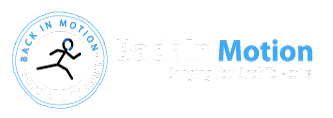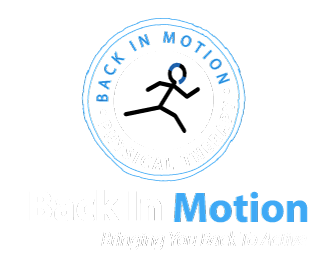Wrist Pain got you down? Read this for helpful tips to prevent further pain and help alleviate symptoms now.

Who Gets Wrist Pain?
Wrist pain & discomfort is an increasingly common workplace and at home complaint. In today’s work environment there are more and more computer related jobs which can be a leading cause of wrist pain & inflammation. The wrist pain can be caused with a sudden onset from a fracture after a fall or trauma. Wrist pain can also be caused from a repetitive stress injury (such as with typing on a keyboard) leading to arthritis or carpal tunnel syndrome.
If your pain has been going on for a long time, diagnosing the exact cause is something your physical therapist at Back In Motion Sarasota Physical Therapy can help you with. Our team of Physical Therapists will get to the root cause of your problem. This means you will get the proper treatment to get you better faster. The chances of your wrist, hand or finger problem is much less likely to re-occur if appropriately treated.
Wrist Pain Symptoms
Wrist pain symptoms can differ. For instance, Osteoarthritis pain is usually referred to as “dull achy pain”. Osteoarthritis pain is usually thought of as a chronic painful condition. Tendinitis may be a “sharp or knife-like pain”. Wrist tendinitis is usually thought of as an acute pain. Paresthesia is a fancy word which refers to tickling, prickling, tingling, burning or “pins-and-needles” type of sensation. Wrist pain and paresthesia may indicate nerve involvement, which is often present with carpal tunnel syndrome. Irritation of the median nerve in the carpal tunnel can cause paresthesia in the thumb, index and middle fingers. Carpal Tunnel Syndrome is also known as “CTS”. Our Physical Therapy team treats CTS each and every day with a high success rate.
The exact location and type of wrist pain will help your physical therapist reach an accurate diagnosis. Make sure you are prepared to give your physical therapist an accurate history of your wrist pain. What fingers does it effect? When do you get the pain? What makes it get better? Is it a dull achy pain or a sharp stabbing pain? This will allow your physical therapist to design a treatment plan to help you on a fast and effective road to recovery. We will soon discuss: 4 Easy Tips to Prevent Wrist Pain but for now, let’s look at some common causes of wrist pain.
Two major causes of wrist pain:
- Sudden impacts: Falls are the most common cause of injury, especially falling with your hand stretched out straight in front of you. This is typically referred to in the medical community as a “FOOSA”. This is the abbreviation for Fall On Out Stretched Arm. This can cause sprains, strains and even fractures. To find out more about wrist pain after a fall, read this: Wrist Injury After a Fall
- Repetitive stress: Any activity that requires repetitive wrist motion such as typing or “keyboarding”, hitting a tennis ball, golf ball, bowling, painting, cooking, gripping weights at the gym or lawn/garden care. These are just a few of the many common causes of wrist pain. These every day common activities can also inflame the wrist tissue.
I have wrist pain, now what……
First time hurting your wrist? Then you may want to try applying ice for approximately 20 minutes. Make sure to use adequate padding such as a folded towel between the ice and your skin. Taking some over-the-counter medicine for pain and inflammation may also be indicated. Always be sure to follow the instructions carefully when taking these medications. If the pain is severe, an over-the-counter wrist brace to reduce abnormal stress of the wrist joint is also a good idea. You can typically find these at your big box stores or your local pharmacy. Back In Motion also has wrist braces in stock. We will be happy to fit you for an appropriate wrist brace (& appropriate size). Let one of our experienced staff members at Back In Motion Sarasota Physical Therapy help you.
Is this a re-injury?
Then you may want to ice it for approximately 20 minutes & avoid any movements or activity which may make it worse. NO PAIN NO GAIN is NOT a rule to follow in this case. When your pain persist for up to 48 hours, you may need to schedule physical therapy. When the underlying condition for wrist pain is left untreated, it can lead to diminished healing. Delayed treatment of wrist pain can leave you with less flexibility in the wrist and fingers. It can also lead to weakness which can contribute to difficulty with everyday activity. You can’t stop unforeseen injuries from happening. But by reading below about 4 easy steps to prevent wrist pain, you will reduce your risk of injury (or re-injury).
4 Tips to Prevent Wrist Pain
- Learn to prevent falls. A forward fall onto an outstretched arm or hand is the cause of most wrist fractures, strains & sprains. Minimize fall risk by wearing well-fitted shoes. Make pathways clear at home and minimize clutter in pathways. Have a well lit home with lamps and lighting. Installing grab bars in your bathroom may be a good idea. The bathroom and the kitchen are the 2 most common areas in the home where falls occur. Check out how to prevent a fall at home for more ideas on how to minimize falls at home.
- Building density & strength of your bones: It is important to get adequate nutrients and vitamins in our daily intake of food. Getting appropriate calcium (at least 1,500 mgs/day day for adults) & adequate amounts of vitamin D is very important to build strong and dense bones. Talk to you doctor and ask for advice on which supplement is best for you. Your Doctor can perform a simple blood test to check your individual Calcium & Vitamin D levels.
- Ergonomics. Retail now offers many products to assist with the improvement of your workstation setup in your work office or home office. Specially designed keypads & keyboards will minimize the stress from your wrists when you’re keyboarding & typing. It is also very important that the height of your chair and the position of the computer monitor relative to your head, neck, & shoulders is correct. This is a very common cause of not only wrist pain, but also neck, shoulder and back pain.
- Strengthening upper body: By building strength in the muscles of the arms, shoulders, and upper back, you can help prevent poor form when typing, pushing, bearing weight in the hands (like a push-up or yoga stretches). Stronger shoulders, back, and arms will take the pressure out of the wrist joint. As always, talk to your doctor before starting an exercise routine. A simple way to start building arm strength is to take a water bottle or can of food in each hand when going on your daily walk and using the weight resistance to bicep curl as you walk. For other easy and helpful tips, talk to one of our Physical Therapists, Certified Personal Trainers or Athletic Trainers here at Back In Motion. We are happy to design a safe and manageable strengthening routine.


0 comments